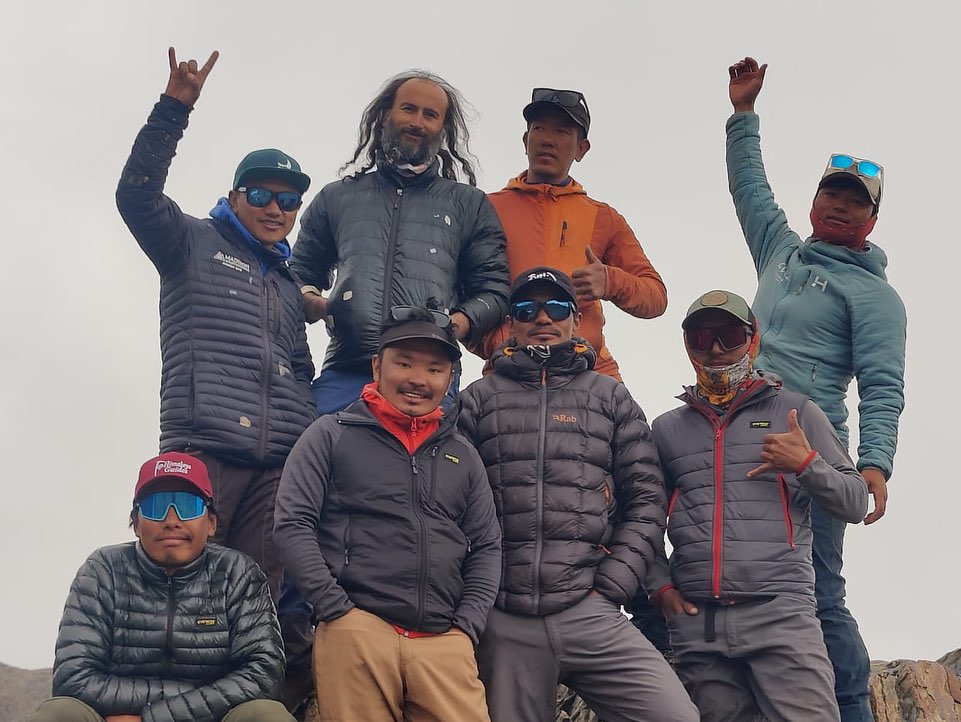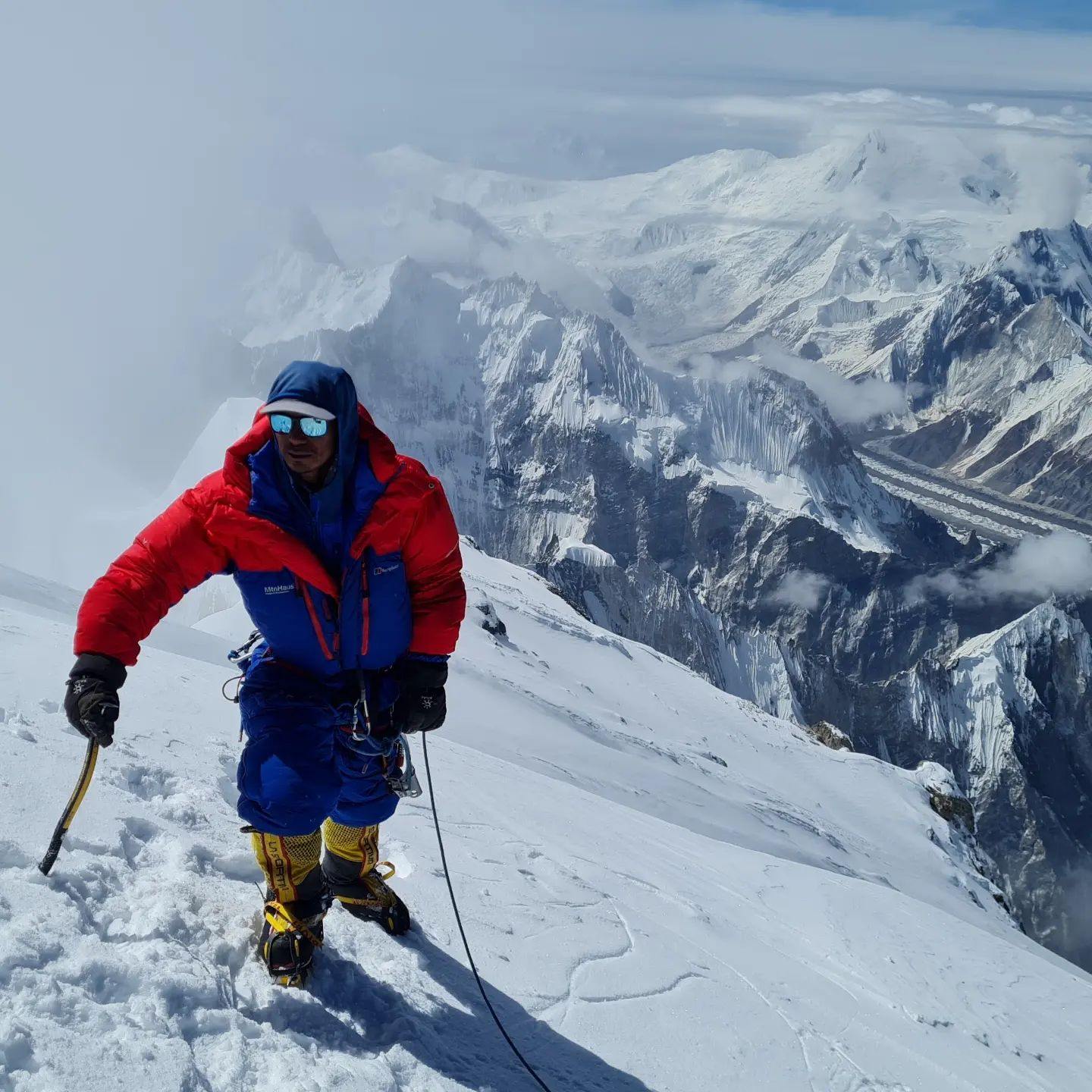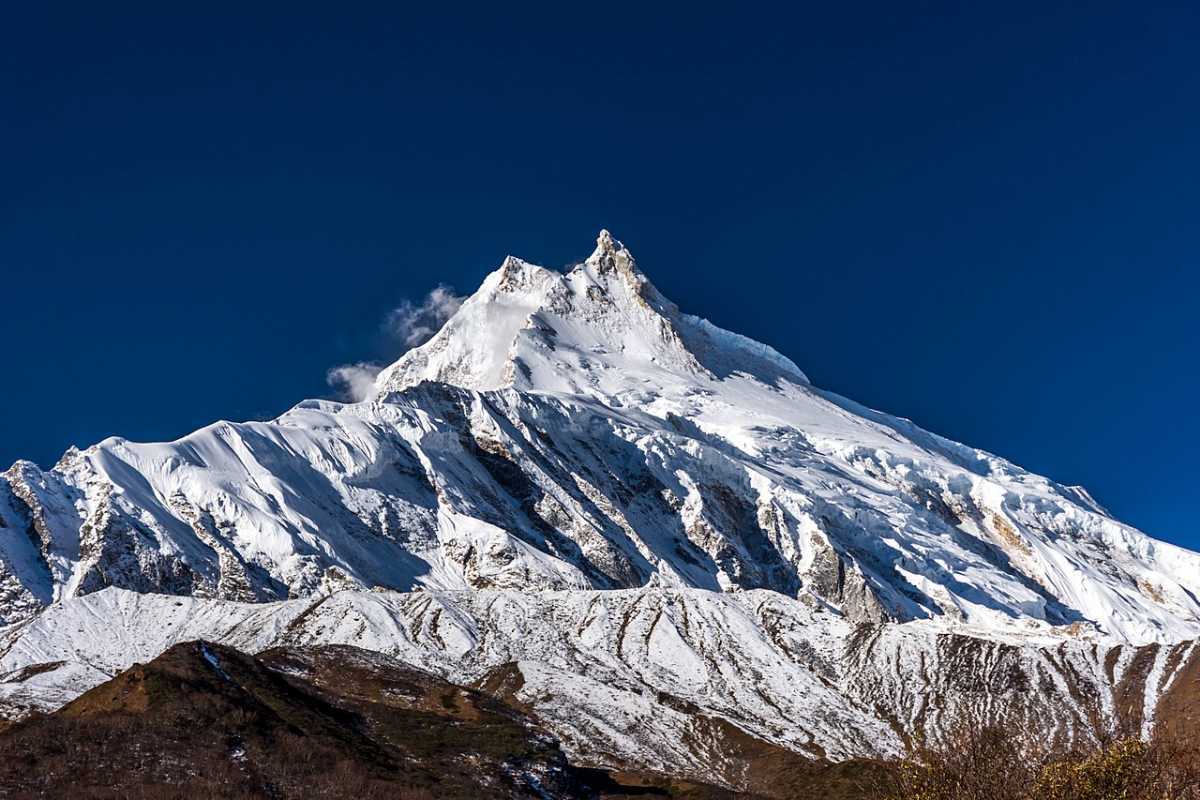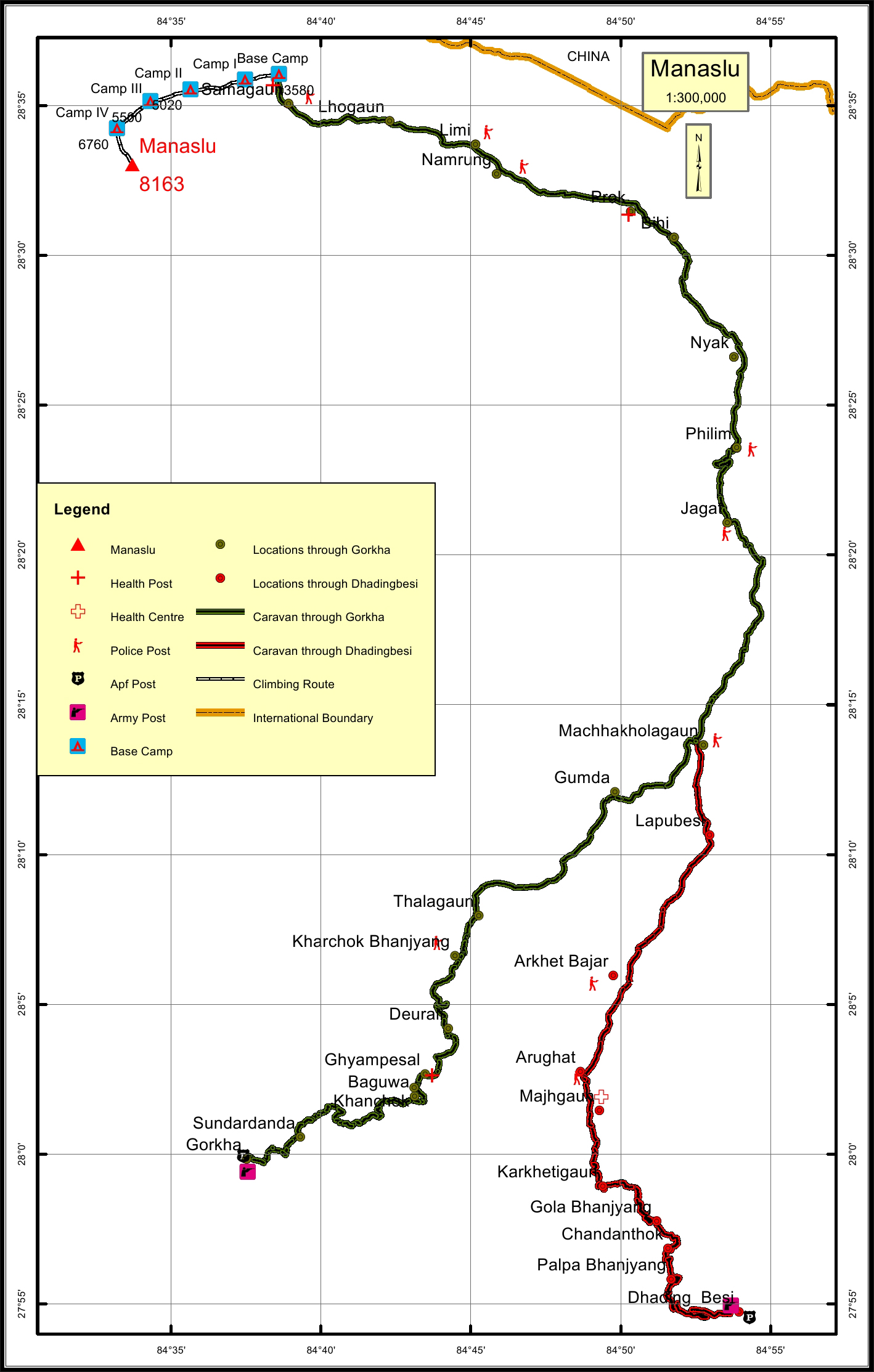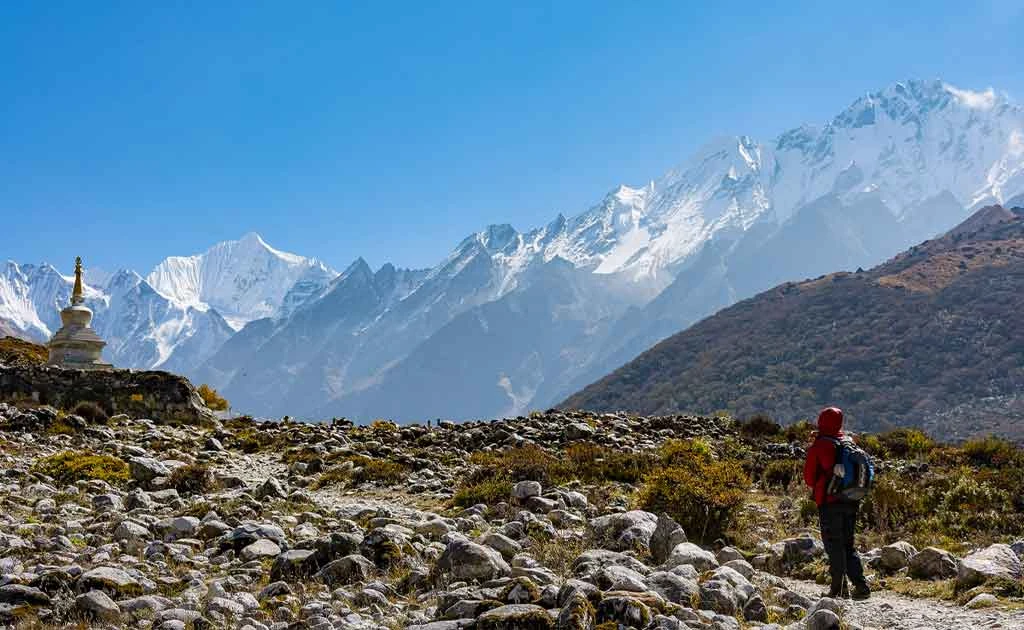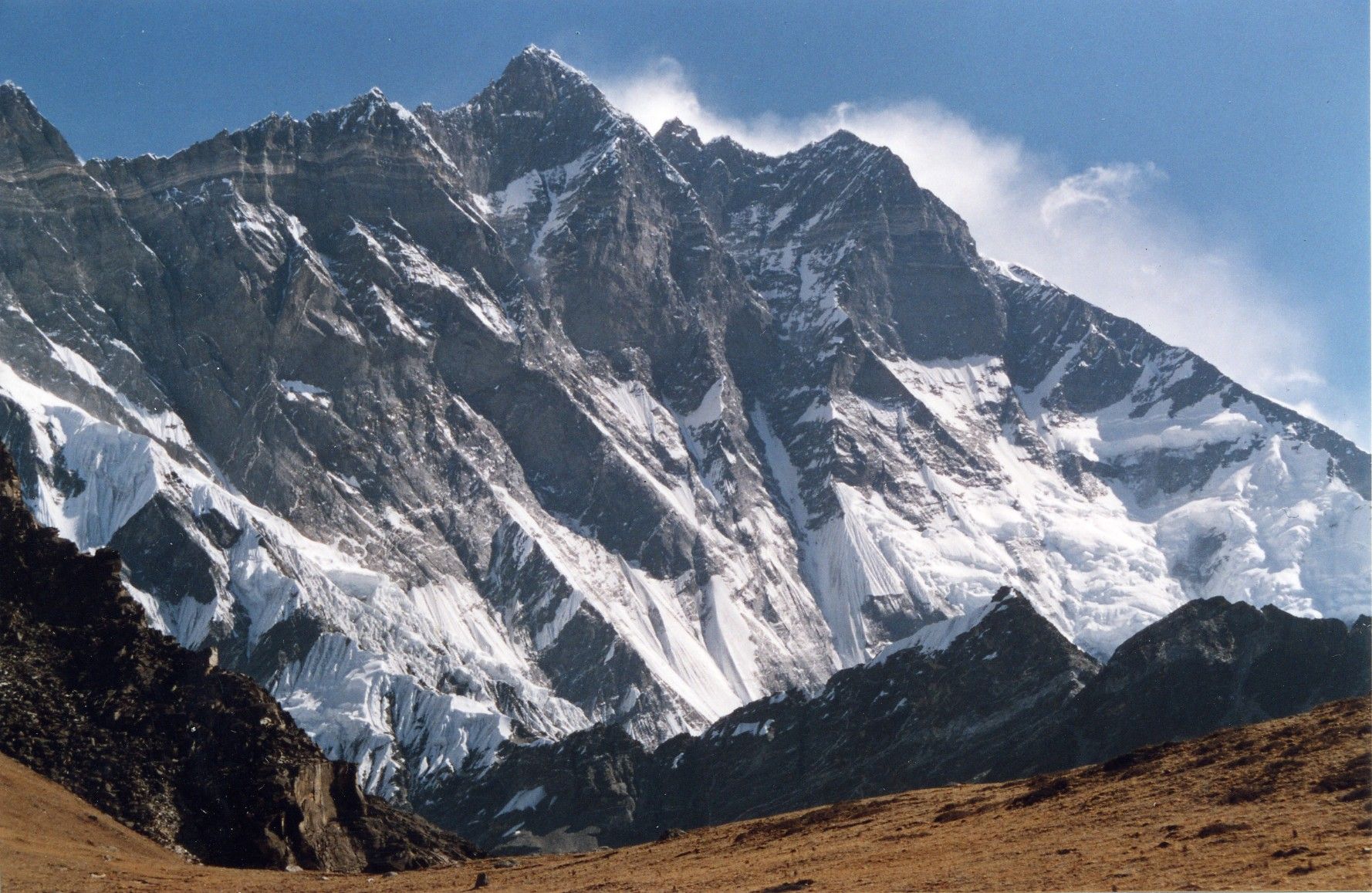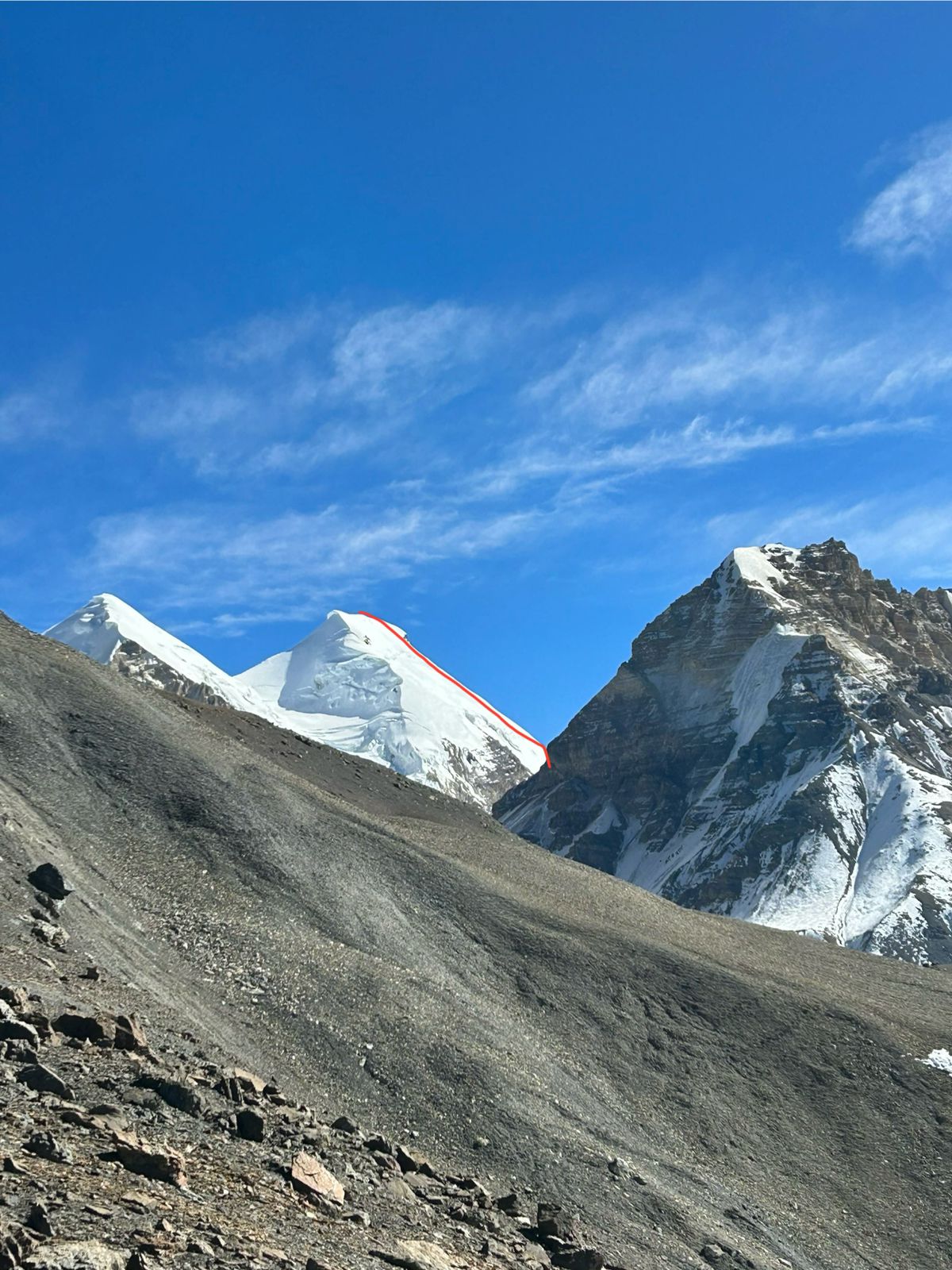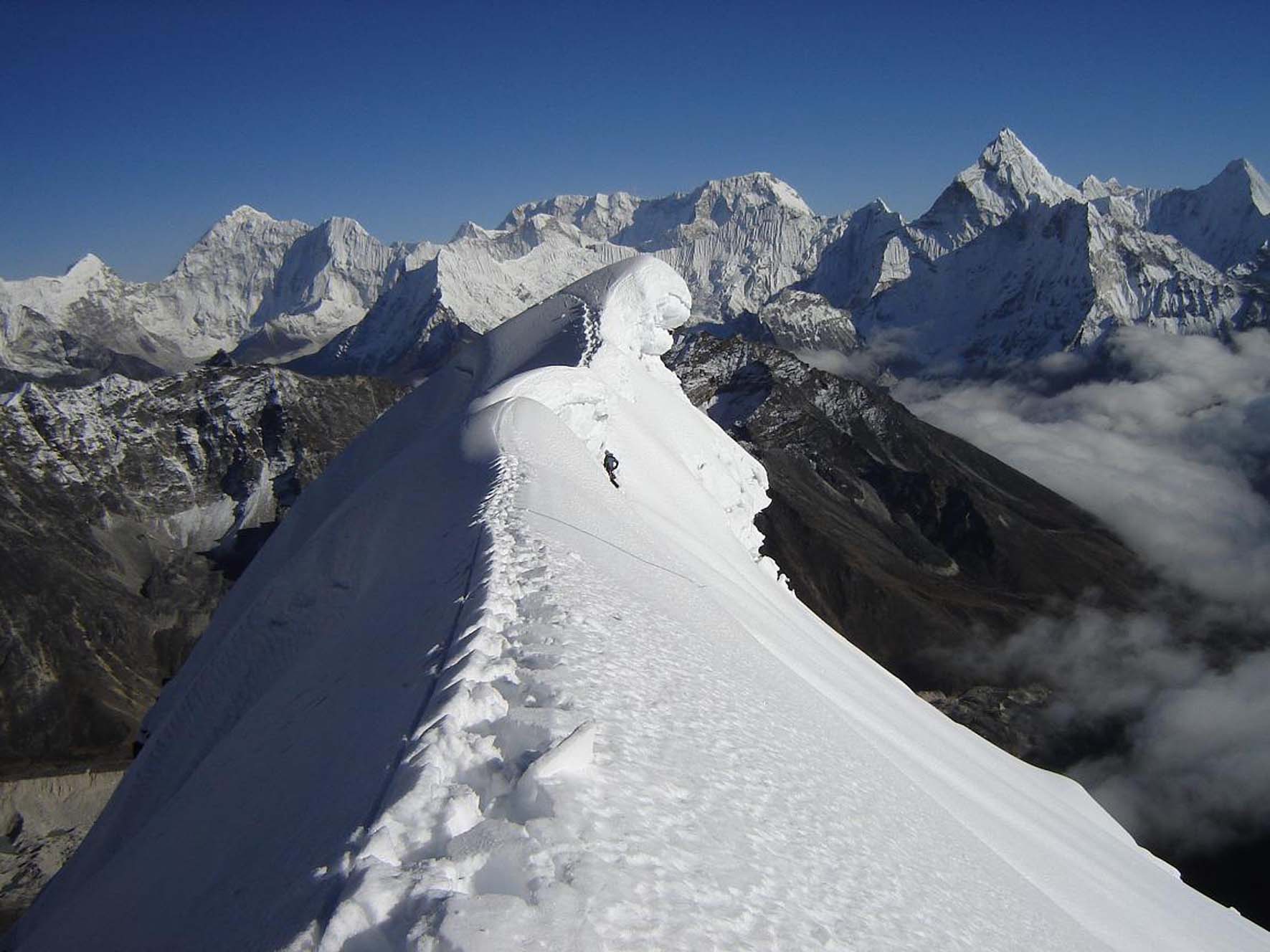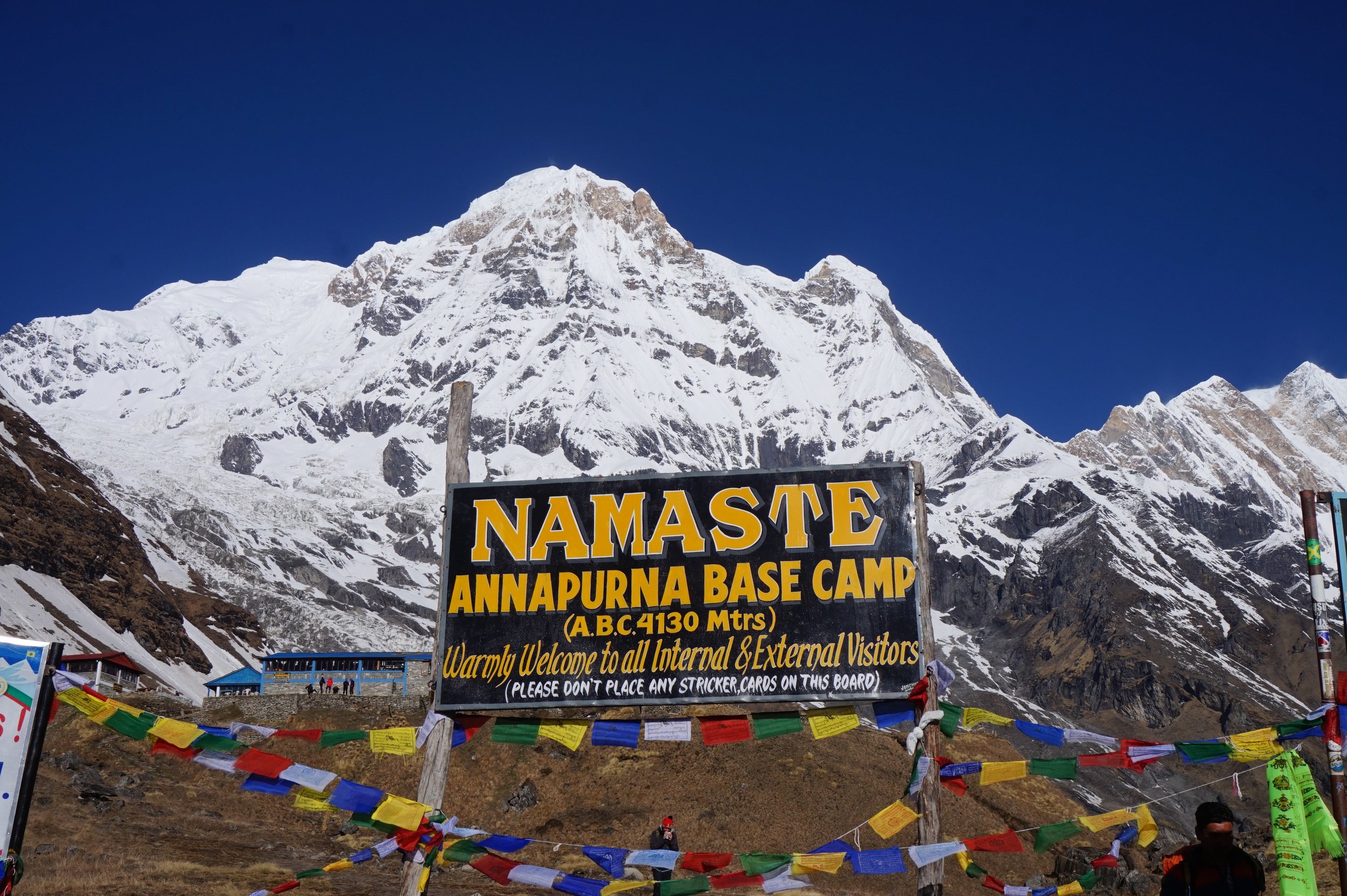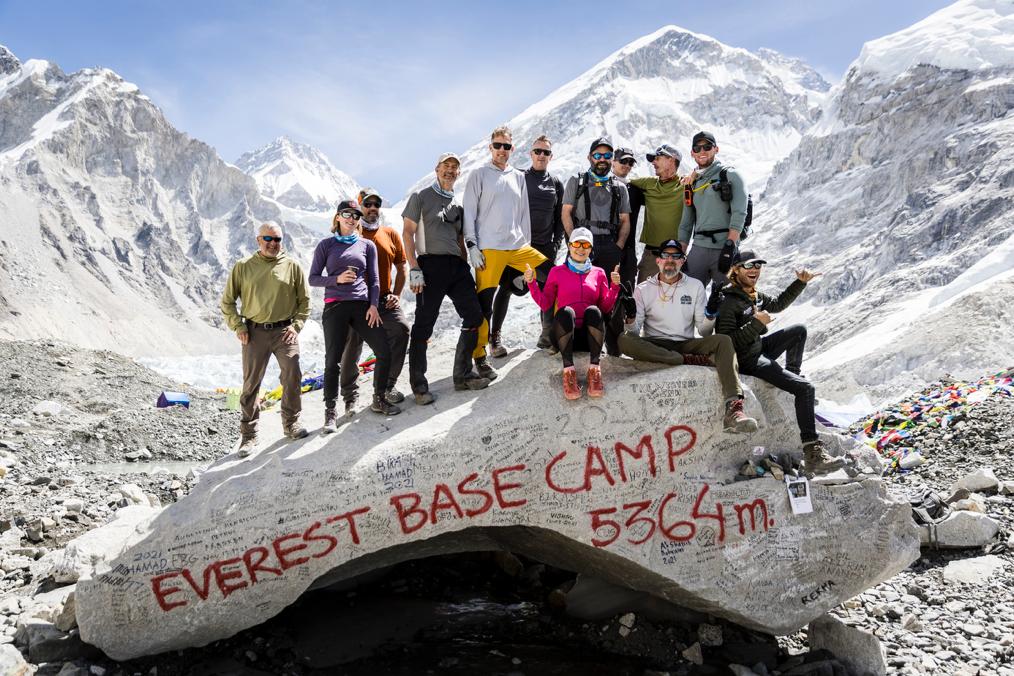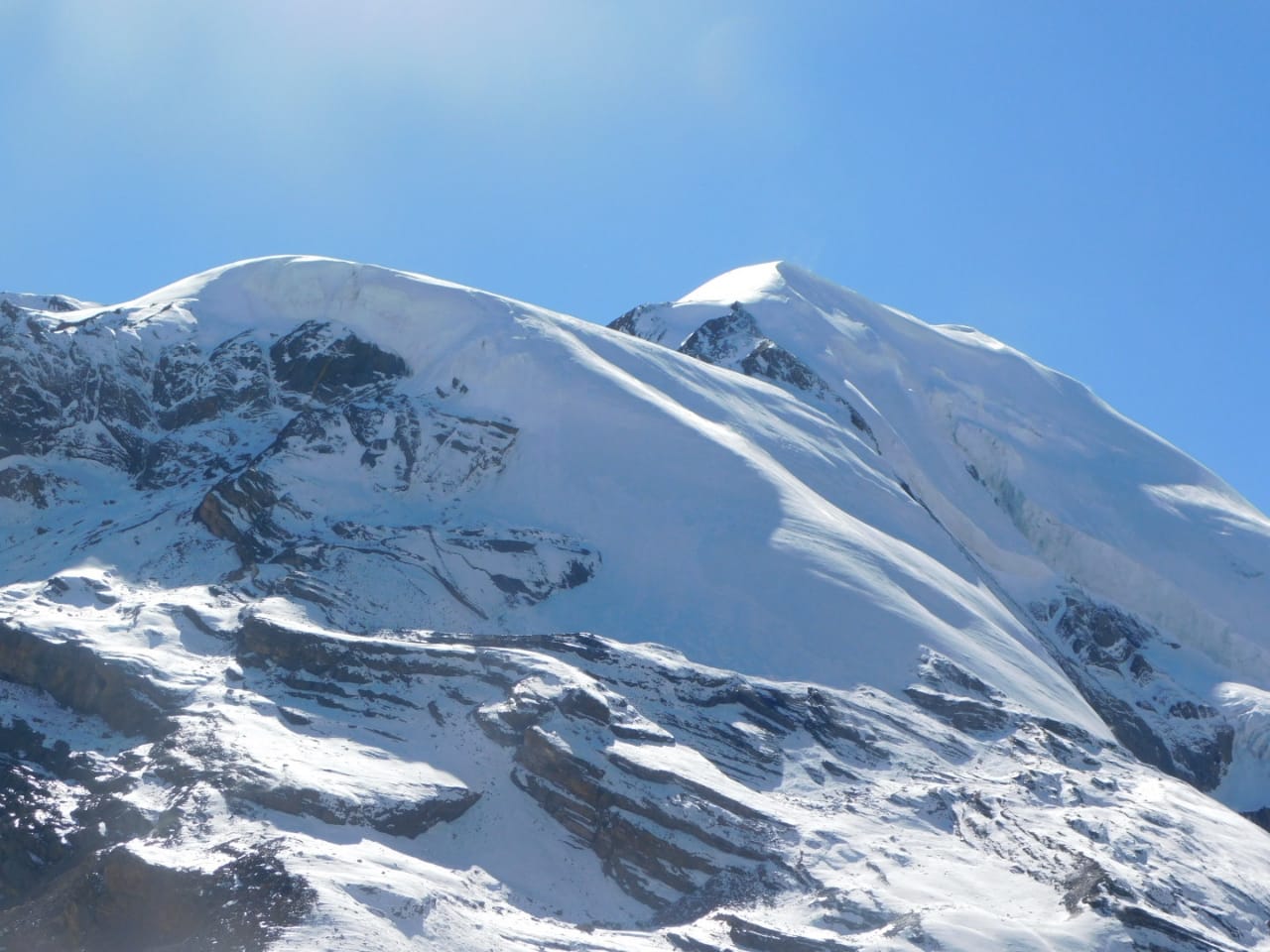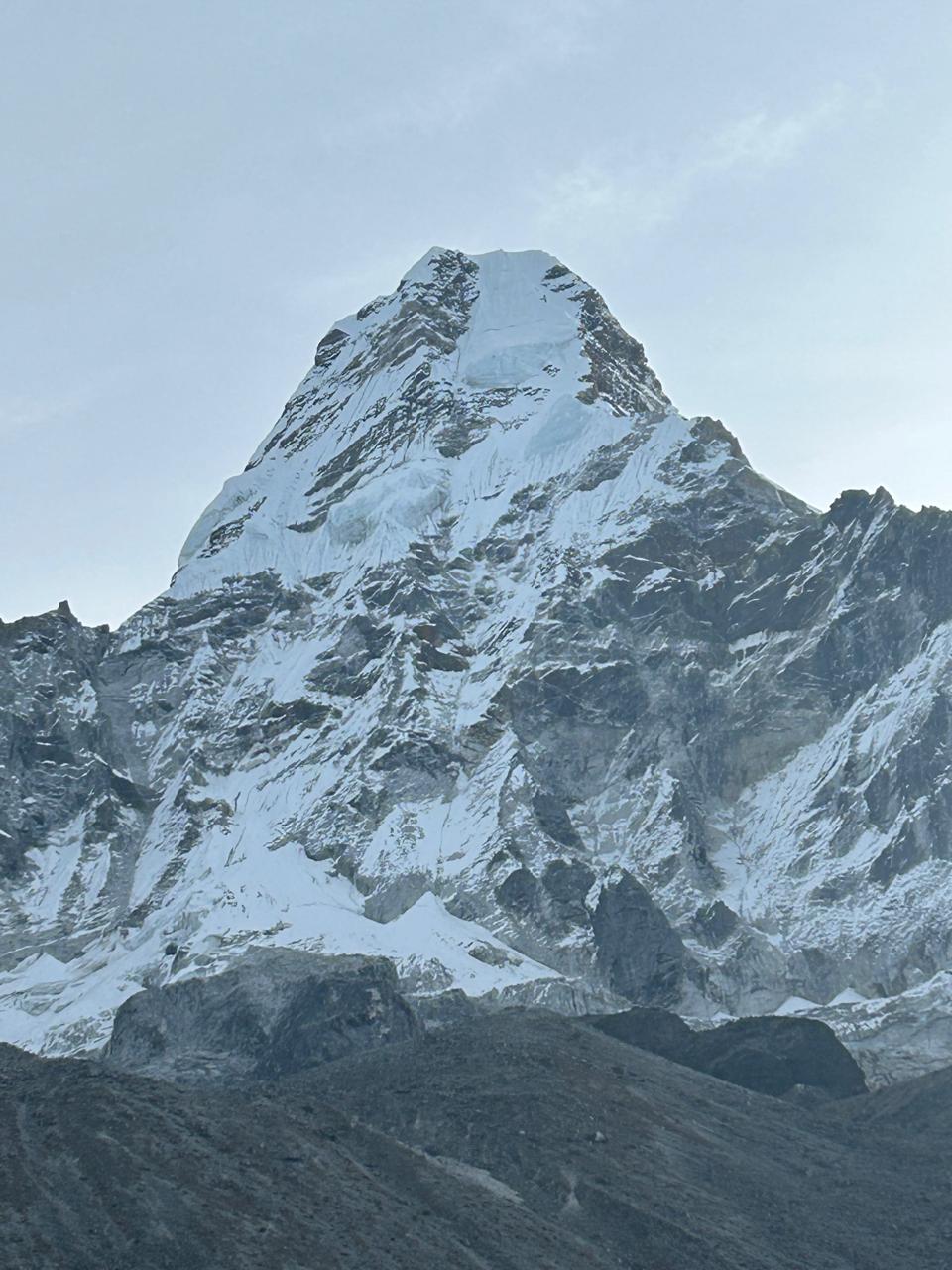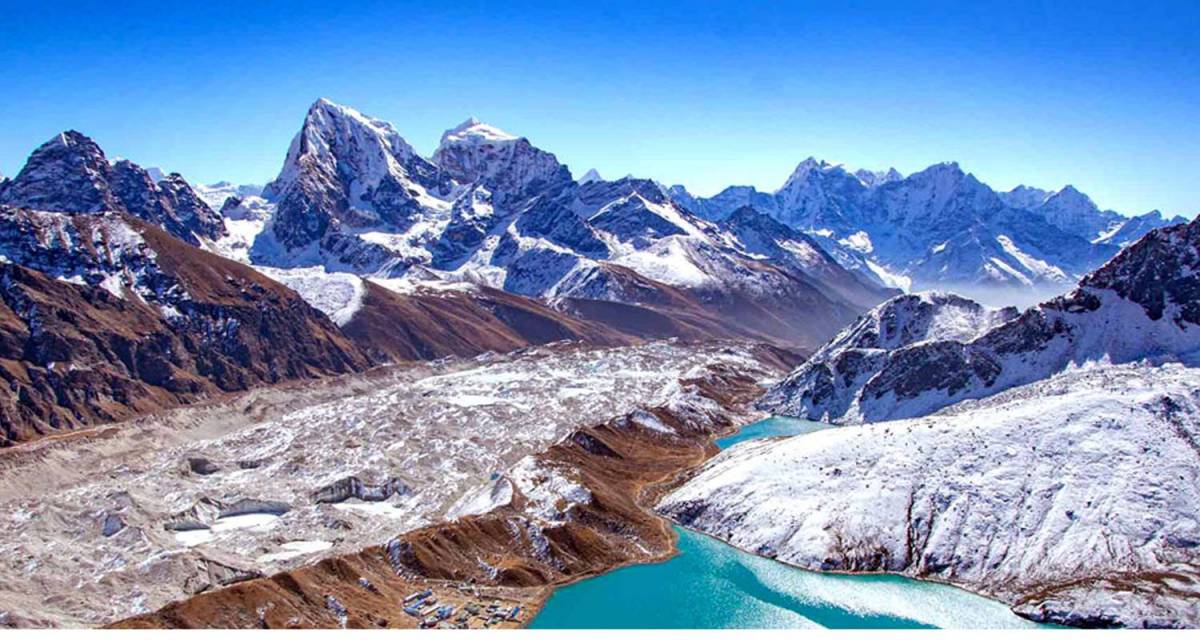Nestled in the heart of the majestic Himalayas, Mount Manaslu stands as a breathtaking testament to the awe-inspiring beauty of Nepal. Manaslu stands proudly as the world’s 8th highest mountain, reaching an impressive 8163 meters (26,781 feet) above sea level. The name Manaslu carries a deep meaning derived from the Sanskrit word ‘Manasa’, signifying ‘intellect’ or ‘soul’ and symbolizing the ‘mountain of spirit.’ It is also known as Kampunge, Kutang, or Peak 30. This colossal giant beckons adventure seekers and nature lovers alike to embark on a journey that transcends the ordinary.
Situated in the western part of Nepal, Latitude 28° 32' 58" and Longitude 84° 33' 43", Manaslu proudly claims its place as the highest in the Mansiri range. This sub-range of Nepal Himalaya is embraced by Larke Pass, Budhi Gandaki River, Gya Pass, and Marshyangdi River. Geographically, Manaslu’s coordinates, place it in a stunning region surrounded by the majestic peaks of the Himalayas. Majestic peaks like Ngadichuli (7871 m), Himalchuli (7893 m), and Shringi (7187 m) share the stage with Manaslu. The region also boasts high-altitude gems like Kalchuvan (Kal Tal) and Birendra Tal.
Mount Manaslu holds not only geographical significance but also a rich history. Manaslu was first climbed on May 9, 1956, by Toshio Imanishi (Japan) and Gyaltsen Norbu Sherpa (India), members of a Japanese expedition led by Japanese mountaineer Maki Yuko, choosing the challenging North East Face route. In 1972, Italian mountaineer and explorer, Reinhold Messner scaled up from the southwest face of the mountain. In 1985, this mountain was scaled in winter from the South Face West Ridge by Eric Moriver.
Manaslu’s silhouette dominates the skyline with its majestic pyramid shape, clad in an ethereal blanket of pristine snow that glistens like diamonds in the sun. The mountain’s flanks are adorned with immense glaciers, creating an otherworldly landscape that leaves visitors spellbound. As the first rays of dawn kiss the summit, a mesmerizing play of colors paints the sky, turning it into a canvas of gold, or silver, casting a magical spell on all who witness it.
Embarking on the journey to Mount Manaslu begins in the bustling city of Kathmandu, winding through Besisahar, Dharapani, Bhimtang, Larke La, Samdo, and Sama Gaon, and culminating at the Base Camp. This trek isn’t just a physical challenge but promises a tapestry of diverse landscapes and cultural richness. The trek to Mount Manaslu weaves through quaint mountain villages, where the warmth of the local people mirrors the welcoming spirit of the Himalayas. The trail takes you through dense forests, where the melody of chirping birds and rustling leaves provides a symphony for your journey. Suspension bridges adorned with colorful prayer flags span rushing rivers, adding a touch of vibrancy to the rugged terrain.
Manaslu’s allure lies not only in its formidable stature but also in the rich cultural tapestry that envelops its base. The region is home to diverse ethnic communities, each with its unique traditions and rituals. Climbers have the opportunity to witness age-old monasteries, prayer wheels, and stone-carved mani walls, immersing themselves in the spiritual aura that permeates the air.
As you ascend higher, the air becomes crisper, and the landscape transforms into a surreal dreamscape. The challenge of the climb is met with unparalleled rewards, as panoramic vistas unfold before your eyes. The Himalayan range unfolds in all its glory, revealing iconic peaks like Annapurna, Ganesh Himal, and the elusive Manaslu herself, creating a tableau of natural grandeur that is etched into memory forever.
The ascent of Manaslu usually follows the demanding North East Face route, a path that demands not just courage but advanced mountaineering skills. For those seeking the pinnacle, four camps above the base camp provide the stepping stones to conquer the summit of Manaslu. The journey from base camp to the summit spans a challenging 12.2 km, with the settlement of Samagaun as the nearest refuge.
The extensive ridges of the mountain provide opportunities for ascent from various directions, converging at the sharply elevated summit that dominates its surrounding landscapes. Of the six available routes, the southern ascent proves to be challenging, whereas the northeast face route stands out as the most frequently taken.
As of autumn 2022, a noteworthy 2,716 climbers have celebrated success on Manaslu’s summit, lured by its enchanting beauty and the challenges it poses.
Mount Manaslu, with its serene majesty and mystical ambiance, invites all who seek the adventure of a lifetime. It is not just a mountain; it is a living testament to the indomitable spirit of nature and the resilient human quest for exploration and discovery.
Beyond being a mere mountain, Manaslu stands as an emblem of exploration and adventure, an invitation for climbers to push their boundaries amidst the awe-inspiring grandeur of the Himalayas.
Duration of Expedition: The Manaslu Expedition typically spans around 33 days, encompassing both trekking and climbing phases. This duration allows for proper acclimatization, cultural exploration, and a gradual ascent to the summit.
Pre-requisites:
Physical Fitness: Participants should be in excellent physical condition with prior experience in high-altitude trekking and basic mountaineering skills.
Technical Skills: Proficiency in using mountaineering equipment, including ice axes and crampons, is essential.
Acclimatization: Adequate acclimatization is crucial; therefore, participants should be prepared for gradual altitude gain during the trek.
Unique Selling Points:
Exclusivity and Solitude: A less-traveled route ensures a more intimate and exclusive experience for participants.
Cultural Immersion: The trek incorporates visits to traditional villages, monasteries, and encounters with local communities, providing a holistic cultural experience.
Varied Terrain: The expedition covers a diverse range of landscapes, from lush forests to high mountain passes and glaciated terrain, offering a dynamic and engaging adventure.
